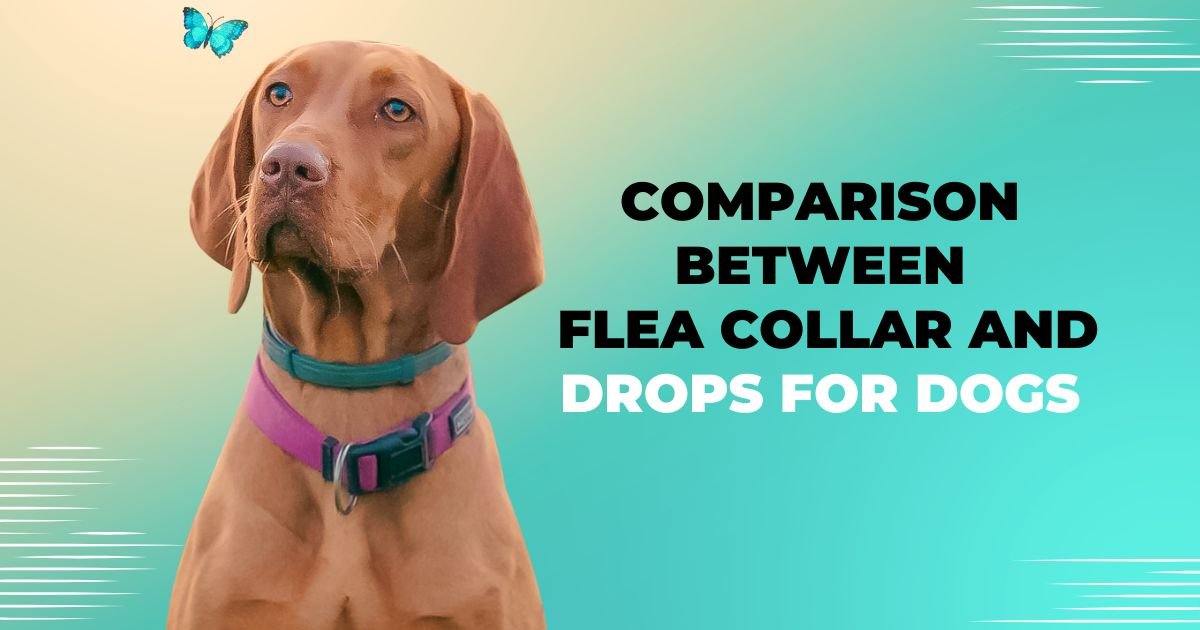Fleas are annoying pests that can cause itching, irritation, and diseases in dogs. If you want to protect your furry friend from these blood-sucking insects, you need to choose the right flea prevention method. There are many options available, but two of the most common ones are flea collars and flea drops. Which one is better for your dog? Let’s compare them and find out.
What are Flea Collars and How Do They Work?
Flea collars are devices that you put around your dog’s neck to prevent and kill fleas. They contain chemicals that are released slowly and spread over your dog’s body through the skin and fur.
Some flea collars work by killing fleas on contact, while others work by making your dog’s blood toxic to fleas. Most flea collars are effective for several months, depending on the brand and type.
Pros and Cons of Flea Collars
Flea collars have some advantages and disadvantages that you should consider before using them. Here are some of them:
Pros
- Easy to use and require little maintenance. You just need to put them on your dog and trim the excess if needed.
- Flea collars provide continuous protection for a long time. Some brands can last up to eight months, which means fewer applications and less hassle for you.
- Flea collars can repel and kill other parasites besides fleas, such as ticks, lice, and mosquitoes. This can reduce the risk of diseases and infections in your dog.
Cons
- Flea collars can cause skin irritation, allergic reactions, or chemical burns in some dogs. You should check your dog’s neck regularly for signs of redness, swelling, or hair loss.
- Flea collars can lose their effectiveness if they get wet, dirty, or damaged. You should replace them if they are exposed to water, shampoo, or chewing.
- Flea collars can pose a choking or poisoning hazard if your dog or another pet tries to bite or swallow them. You should keep them out of reach of children and animals.
What are Flea Drops and How Do They Work?
Flea drops are also known as topical or spot-on flea treatments. They are liquids that you apply on your dog’s skin, usually between the shoulder blades or along the back.
They contain chemicals that are absorbed into your dog’s bloodstream and kill fleas when they bite your dog. Some flea drops also kill flea eggs and larvae, preventing new infestations.
Most flea drops are effective for a month, depending on the brand and type.
Pros and Cons of Flea Drops
Flea drops also have some advantages and disadvantages that you should consider before using them. Here are some of them:
Pros
- Flea drops are more effective than flea collars at getting rid of fleas and ticks. They absorb better into your dog’s system and distribute the pesticide more evenly over the body.
- Flea drops are more convenient and discreet than flea collars. You don’t have to worry about your dog’s appearance or comfort with a collar around their neck.
- Flea drops can treat and prevent other parasites besides fleas, such as mites, worms, and heartworms. This can improve your dog’s overall health and wellness.
Cons
- Flea drops can be messy and difficult to apply. You have to part your dog’s fur and squeeze the liquid onto the skin, which can be tricky and time-consuming.
- Flea drops can cause skin irritation, allergic reactions, or systemic toxicity in some dogs. You should monitor your dog for signs of vomiting, diarrhoea, tremors, or seizures.
- Flea drops can be harmful to humans and the environment. You should wash your hands after applying them and avoid contact with your dog’s treated area for a few hours. You should also dispose of the empty containers properly and avoid contaminating water sources.
Final Thoughts
Flea collars and flea drops are both effective ways to prevent and treat flea infestations in dogs. However, they have different pros and cons that you should weigh before choosing one. The best option for your dog depends on several factors, such as their size, breed, lifestyle, health, and preferences. You should also consult your veterinarian for advice and recommendations. Whichever method you choose, make sure to follow the instructions carefully and use it regularly to keep your dog flea-free and happy.

